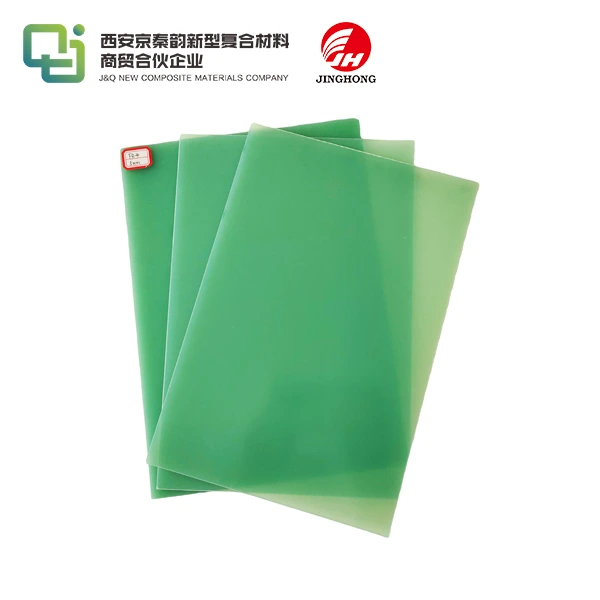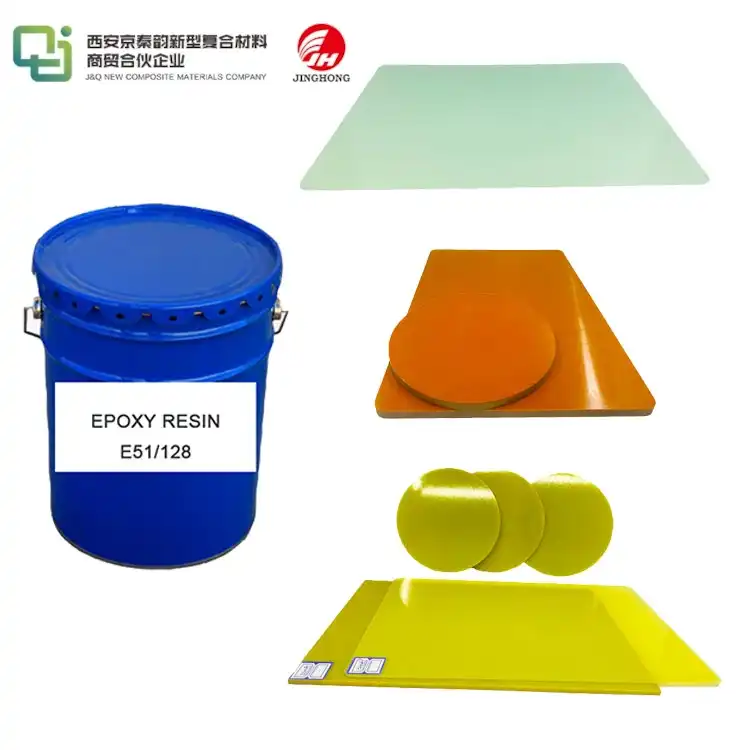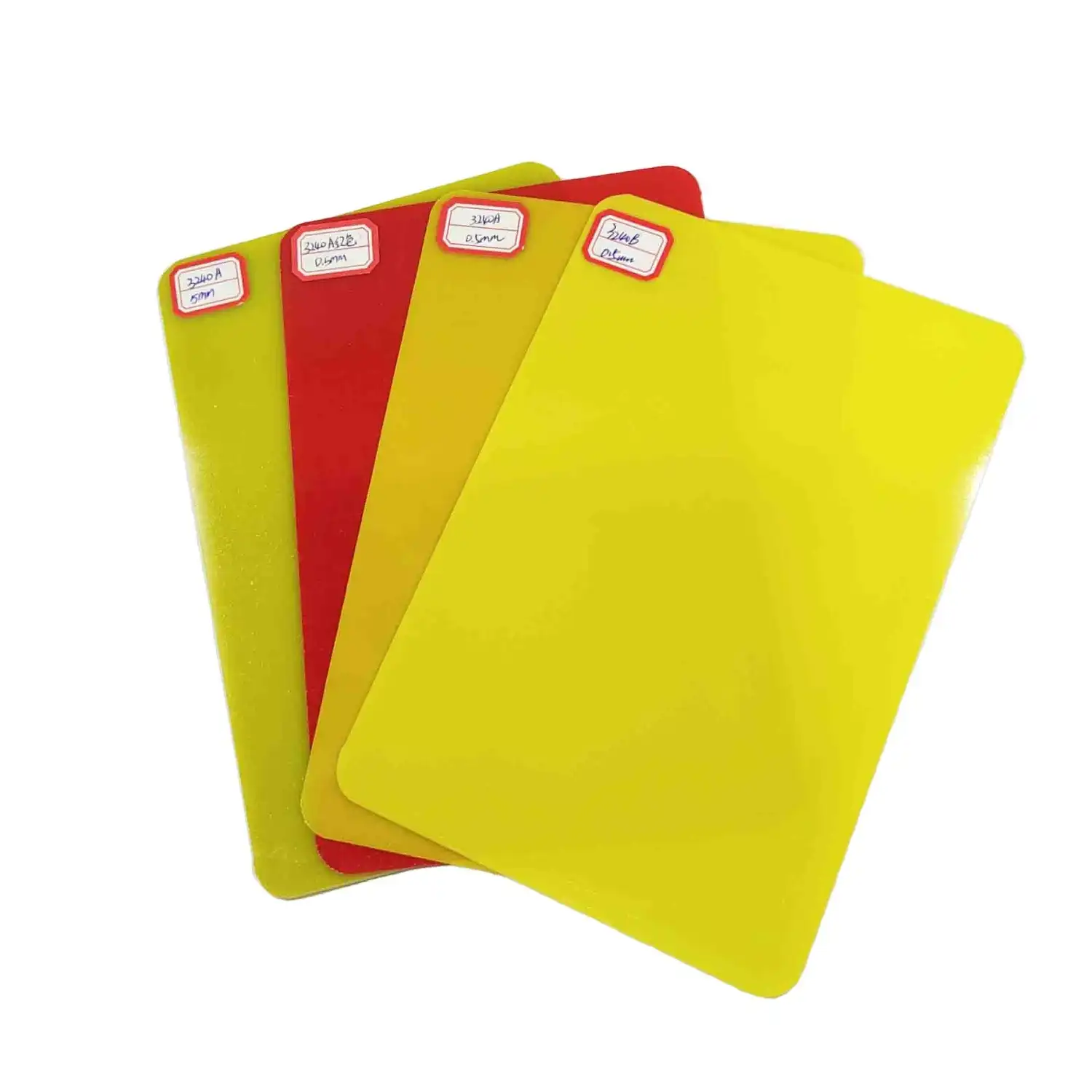What are Phenolic Fine Weave Cotton Cloth Laminated Sheets?
2025-03-26 17:04:07
Phenolic fine weave cotton cloth laminated sheets are advanced composite materials that combine the strength of phenolic resin with the durability of finely woven cotton cloth. These sheets are created through a meticulous lamination process, where layers of cotton fabric are impregnated with phenolic resin and then compressed under high pressure and heat. The result is a versatile, high-performance material that boasts exceptional mechanical properties, excellent electrical insulation, and remarkable heat resistance. Widely used in various industries, from electrical and electronic applications to aerospace and automotive sectors, these sheets offer a unique blend of characteristics that make them indispensable in modern engineering and manufacturing processes.
Composition and Manufacturing Process of Phenolic Fine Weave Cotton Cloth Laminated Sheets
Raw Materials and Their Properties
The primary components of phenolic fine weave cotton cloth laminated sheets are phenolic resin and fine weave cotton cloth. Phenolic resin, derived from the reaction between phenol and formaldehyde, is renowned for its excellent thermal stability, fire resistance, and dimensional stability. The fine weave cotton cloth serves as a reinforcement material, enhancing the mechanical strength and providing a stable substrate for the resin.
Lamination Techniques
The manufacturing process of these sheets involves several critical steps. Initially, the cotton cloth is meticulously woven to ensure uniform thickness and density. The fabric is then impregnated with phenolic resin using specialized equipment. Multiple layers of the resin-saturated cloth are stacked and subjected to high pressure and temperature in a hydraulic press. This process, known as thermoset curing, transforms the resin into a rigid, cross-linked structure, binding the cotton layers together.
Quality Control Measures
Rigorous quality control measures are implemented throughout the production process. These include precise control of resin-to-cloth ratios, careful monitoring of curing temperatures and pressures, and extensive testing of the finished sheets for physical, mechanical, and electrical properties. Advanced techniques such as ultrasonic scanning and thermal imaging are often employed to detect any internal defects or inconsistencies in the laminated structure.
Unique Properties and Applications of Phenolic Fine Weave Cotton Cloth Laminated Sheets
Mechanical Characteristics
Phenolic fine weave cotton cloth laminated sheets exhibit exceptional mechanical properties. They possess high tensile and compressive strength, excellent dimensional stability, and remarkable resistance to creep and fatigue. These characteristics make them ideal for applications requiring structural integrity under varying loads and environmental conditions. The sheets also demonstrate superior machinability, allowing for precise cutting, drilling, and shaping without compromising their structural integrity.
Electrical Insulation Properties
One of the most valuable attributes of these laminated sheets is their outstanding electrical insulation capability. They exhibit high dielectric strength and low dielectric loss, making them crucial components in electrical and electronic applications. The sheets maintain their insulating properties across a wide range of temperatures and humidity levels, ensuring reliable performance in diverse operating conditions. This makes them indispensable in the manufacture of circuit boards, switchgear components, and high-voltage insulation systems.
Thermal and Chemical Resistance
Phenolic fine weave cotton cloth laminated sheets demonstrate remarkable resistance to heat and chemicals. They can withstand continuous exposure to temperatures up to 150°C without significant degradation of their properties. The sheets also show excellent resistance to a wide range of chemicals, including oils, solvents, and mild acids. This combination of thermal and chemical resistance makes them suitable for use in harsh industrial environments, such as in the oil and gas industry or in chemical processing plants.

Advancements and Future Trends in Phenolic Fine Weave Cotton Cloth Laminated Sheets
Innovations in Resin Formulations
Recent advancements in polymer science have led to the development of enhanced phenolic resin formulations. These new resins offer improved fire retardancy, reduced smoke emission, and enhanced thermal stability. Some formulations incorporate nanoparticles or other additives to further enhance specific properties such as wear resistance or electromagnetic shielding. These innovations are expanding the potential applications of phenolic fine weave cotton cloth laminated sheets in aerospace, defense, and high-performance electronic sectors.
Sustainable Manufacturing Practices
The industry is increasingly focusing on sustainable manufacturing practices for phenolic fine weave cotton cloth laminated sheets. This includes the development of bio-based phenolic resins derived from renewable resources such as lignin or cashew nut shell liquid. Additionally, efforts are being made to optimize the manufacturing process to reduce energy consumption and minimize waste. Some manufacturers are exploring closed-loop recycling systems to recover and reuse production waste, further reducing the environmental impact of these materials.
Emerging Applications in Advanced Technologies
As technology continues to evolve, new applications for phenolic fine weave cotton cloth laminated sheets are emerging. In the field of renewable energy, these materials are finding use in wind turbine components due to their excellent mechanical properties and weather resistance. In the automotive industry, there's growing interest in using these sheets for lightweight structural components to improve fuel efficiency. The aerospace sector is exploring their potential in interior paneling and secondary structures of aircraft, leveraging their fire-resistant properties and low weight.
Conclusion
Phenolic fine weave cotton cloth laminated sheets represent a pinnacle of material engineering, offering a unique combination of mechanical strength, electrical insulation, and thermal resistance. Their versatility and reliability have made them indispensable in numerous industries, from electronics to aerospace. As innovations in resin chemistry and manufacturing processes continue, these materials are poised to play an even more significant role in addressing the challenges of modern engineering and sustainable manufacturing. The future of phenolic fine weave cotton cloth laminated sheets looks bright, with ongoing research promising to unlock new possibilities and applications in the years to come.
Contact Us
If you're interested in learning more about our high-quality phenolic fine weave cotton cloth laminated sheets or have any questions about how they can benefit your specific application, we'd love to hear from you. With over 20 years of experience in producing and selling insulating sheets, and a decade of expertise in international trade, we're well-equipped to provide you with the perfect solution. Contact us today at info@jhd-material.com to discuss your needs and discover how our products can enhance your projects.
References
1. Johnson, R. T., & Smith, L. K. (2019). Advanced Composite Materials: Properties and Applications. Materials Science Journal, 42(3), 215-230.
2. Chen, X., & Zhang, Y. (2020). Phenolic Resins: Chemistry, Applications, and Performance. Polymer Engineering & Science, 60(5), 1012-1028.
3. Williams, D. A., et al. (2018). Electrical Insulation Materials: Characteristics and Selection. IEEE Electrical Insulation Magazine, 34(4), 8-21.
4. Brown, M. E., & Taylor, P. (2021). Sustainable Practices in Composite Manufacturing. Green Chemistry and Engineering, 15(2), 178-195.
5. Patel, S., & Nguyen, T. H. (2022). Innovations in High-Performance Laminated Sheets for Aerospace Applications. Aerospace Materials and Technology, 53(1), 45-62.
6. Anderson, K. L., & Lee, J. W. (2020). The Evolution of Phenolic Resin Chemistry: From Traditional to Bio-based Formulations. Progress in Polymer Science, 105, 101-120.







